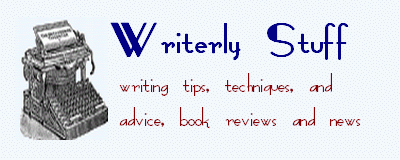So what if you don't have any ideas? I could lend you a few ;-), but they might not be to your liking (i.e., they suck, in your mind, and you might be right). But then, that's not using the creative side of your brain, is it?
I bring this up only because of the STUPENDOUS!! SUPERB!! UNBELIEVABLE!! ideas writers have come up with to help them out of this particular quagmire.
That's over-the-top hype, in case you didn't get it. :-)
Looking around for something to write about, I first thought of talking about writers and taxes. But after doing an (already) boring post on copyright, I decided two boring posts in a row would induce sleep in most people...and force them to move on to the next blog (oh no!)).
Plotto = Weird
Searching about the interwebs, I came upon this. An article in the April/May edition of Asimov's Science Fiction Magazine, it was written by Robert Silverburg, and gets into stuff that writers have come up with to help other writers. In this article, specifically, a book called Plotto.
Aside: Sounds like a board game, doesn't it?
It was written by a writer named William Wallace Cook who wrote science fiction (SF) from about 1903 to 1925. He came up with a really bizarre system:
From the experience of writing these and other novels, Cook derived a basic structure for all fiction, which he set forth in his book Plotto: The Master Book of All Plots, published in 1928. A plot, he says, can be summarized in a sentence made up of just three clauses: “An initial Clause defining the protagonist in general terms, a middle Clause initiating and carrying on the action, and a final Clause . . . terminating the action.” Nothing very surprising there; all he is really saying is that a story should have a beginning, a middle, and an end. Cook goes on to declare that all plots are driven by desire for one of the three kinds of happiness: happiness in love and courtship, in married life, or in enterprise. “All that is possible to a mortal craftsman,” he observes sagely, “is the combining of old material into something new and different.”
Okay...nothing wrong with that.
Then he says that those three drivers can be developed into only 36 plot situations. So now you're thinking, that's not so bad, right?
Until he hits you with the bizarro part of his system, the possibilities of which are endless - and confusing. I'd go into it, but I think Mr. Silverberg explains it far better than I ever could.
More Modern Stuff
Ideas can come from anywhere, like reading up on recent news events. Things that have helped me are word prompts from websites; watching old movies (sometimes detailed synopses can be found at the Internet Movie Database); and from old novels or short stories (but don't plagiarize).
As for books that might help (if you'll pardon me for being a shill):
The Write-Brain Workbook: 366 Exercises to Liberate Your Writing
The Writer's Idea Book
There's even a more modern take on good old Plotto: Plots Unlimited: A Creative Source for Generating a Virtually Limitless Number and Variety of Story Plots and Outlines
You get the idea. I can vouch for The Writer's Idea Book, in that I have a copy at home, but I haven't really utilized it all that much - it does have 5 stars on Amazon, if that means anything.
I found the article interesting and amusing. If nothing else, it shows that this is something writers have been having problems with for quite some time.


1 comments:
Interesting info! Thanks!
Post a Comment